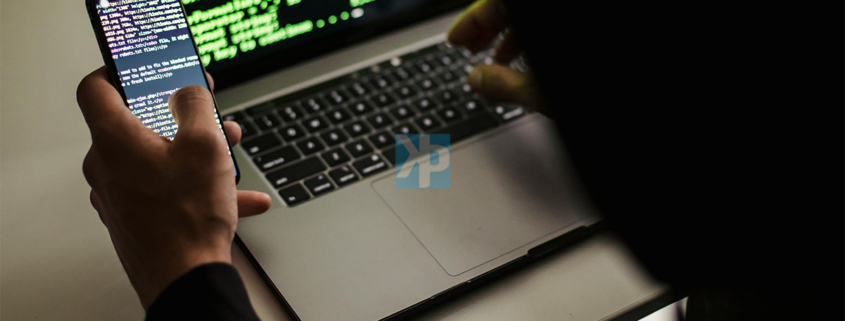Top 10 Ways to Protect Your Personal Data on the Internet
Protecting our personal data online has never been more crucial. Whether you’re a small business owner or just someone who values their privacy, safeguarding your information is essential. Our personal data is constantly at risk from various threats.
To help you stay safe, I’ve compiled a list of my top 10 ways to protect your personal data on the internet.
These practical tips are designed to keep your information secure and give you peace of mind while navigating the online world. Let’s dive in and take control of our digital security together.
-
Use Strong and Unique Passwords
- One of the most fundamental steps in protecting your personal data online is to use strong and unique passwords. Aim for passwords that are at least 12 characters long, incorporating a mix of uppercase and lowercase letters, numbers, and symbols to enhance complexity. Avoid using common words, names, or phrases, and never reuse passwords across multiple accounts, as this puts all your accounts at risk if one is compromised. To manage your passwords effectively, consider using a password manager, which can generate complex passwords for you and store them securely, so you only need to remember one master password.
-
Enable Two-Factor Authentication (2FA)
- Enabling Two-Factor Authentication (2FA) adds an extra layer of security to your online accounts by requiring a second piece of information in addition to your password. When you enable 2FA, you’ll need to provide something you know (your password) and something you have (a code sent to your phone, an authentication app, or a hardware token). This additional step makes it significantly more difficult for hackers to gain access to your accounts, even if they manage to obtain your password. By using 2FA, you ensure that your accounts remain secure and protected against unauthorized access, providing you with greater peace of mind while navigating the digital world.
-
Be Cautious with Personal Information
- Being cautious with personal information is crucial to protecting your privacy and security online. Avoid sharing sensitive details like your address, phone number, or financial information on social media or unsecured websites. Publicly posting this information can make you a target for identity theft, phishing scams, and other malicious activities. Always verify the security of websites before entering personal details, ensuring they use “https://” in their URLs. Additionally, consider adjusting privacy settings on your social media accounts to control who can see your information, and be mindful of the information you share in public posts. By limiting the exposure of your personal data, you significantly reduce the risk of it being misused.
-
Keep Your Software Updated
- Keeping your software updated is essential for protecting your personal data against security vulnerabilities and malware. Regular updates to your operating system, browser, and installed applications include patches that fix security flaws and improve functionality. Cybercriminals often exploit outdated software to gain unauthorized access to your system, so staying current with updates minimizes this risk. Enable automatic updates whenever possible to ensure you receive the latest security enhancements promptly. By maintaining up-to-date software, you create a more secure digital environment, safeguarding your personal information from potential threats and ensuring your devices run smoothly.
-
Use Secure Connections
- Using secure connections is vital for protecting your personal data online. When entering sensitive information, ensure the website’s URL starts with “https://” and that there’s a padlock icon in the address bar, indicating a secure connection. This means the data you send and receive is encrypted, making it much harder for cybercriminals to intercept and steal your information. Avoid entering personal details on websites without these security features, as they can leave your data vulnerable to attacks. By always using secure connections, you add a crucial layer of protection to your online activities, keeping your personal information safe from unauthorized access.
-
Be Wary of Phishing Scams
- Being wary of phishing scams is crucial for protecting your personal data from cybercriminals. Phishing scams often involve emails or messages that appear to be from legitimate sources but are designed to steal your personal information. To avoid falling victim, never click on links or download attachments from unknown or suspicious emails. Always verify the sender’s email address and look for signs of phishing, such as generic greetings, spelling errors, or urgent requests for personal information. If an email seems suspicious, contact the sender directly using a known, trusted method to confirm its legitimacy. By staying vigilant and cautious, you can prevent phishing attacks and keep your personal information secure.
-
Limit App Permissions
- Limiting app permissions is an essential step in protecting your personal data on smartphones and tablets. Many apps request access to various features and information on your device, but not all of these permissions are necessary for the app to function. Before granting permissions, review what the app is asking for and consider whether it truly needs access to that data. For example, a weather app might not need access to your contacts or camera. By limiting permissions to only what is essential, you reduce the risk of apps collecting or sharing your personal information without your knowledge. Regularly check and update the permissions of your installed apps to maintain control over your data and enhance your device’s security.
-
Regularly Check Your Privacy Settings
- Regularly checking your privacy settings is crucial for controlling who can access your personal information on social media and other online services. Adjust these settings to limit the visibility of your posts, profile information, and contact details to only those you trust. Additionally, review the privacy policies of the platforms you use to understand how your data is collected, stored, and shared. By staying informed and proactive, you can minimize the risk of unauthorized access to your personal information and enjoy a safer online experience.
-
Use a VPN (Virtual Private Network)
- Using a Virtual Private Network (VPN) is a smart way to enhance your online security, particularly when using public Wi-Fi networks. A VPN encrypts your internet connection, preventing hackers from intercepting your data and potentially accessing sensitive information like passwords or financial details. By routing your internet traffic through a secure server, a VPN also hides your IP address, providing you with anonymity and protecting your privacy. Whether you’re browsing the web, accessing sensitive information, or communicating online, using a VPN adds an extra layer of security to your online activities, safeguarding your personal data from prying eyes.
-
Monitor Your Accounts
- Monitoring your accounts regularly is crucial for detecting and preventing unauthorized access and fraudulent activities. Regularly review your bank statements, credit reports, and online accounts for any suspicious transactions or activities. Look out for any unfamiliar charges, withdrawals, or changes to your account information. Set up alerts with your financial institutions and online service providers to receive notifications of unusual transactions or login attempts. By staying vigilant and proactive, you can quickly identify and address any potential security breaches, protecting your personal and financial information from unauthorized access and fraud.
By implementing these measures, you can significantly reduce the risk of your personal data being compromised on the internet. Safeguarding your personal information is an ongoing process that requires diligence and awareness of potential threats. By using strong and unique passwords, enabling two-factor authentication, being cautious with personal information, keeping your software updated, using secure connections, being wary of phishing scams, limiting app permissions, regularly checking your privacy settings, using a VPN, and monitoring your accounts, you can create a more secure online presence for yourself.
Remember, your personal data is valuable, and taking proactive steps to protect it can help you avoid falling victim to cybercrimes and maintain control over your digital identity. Stay informed, stay vigilant, and stay safe online.




Leave a Reply
Want to join the discussion?Feel free to contribute!